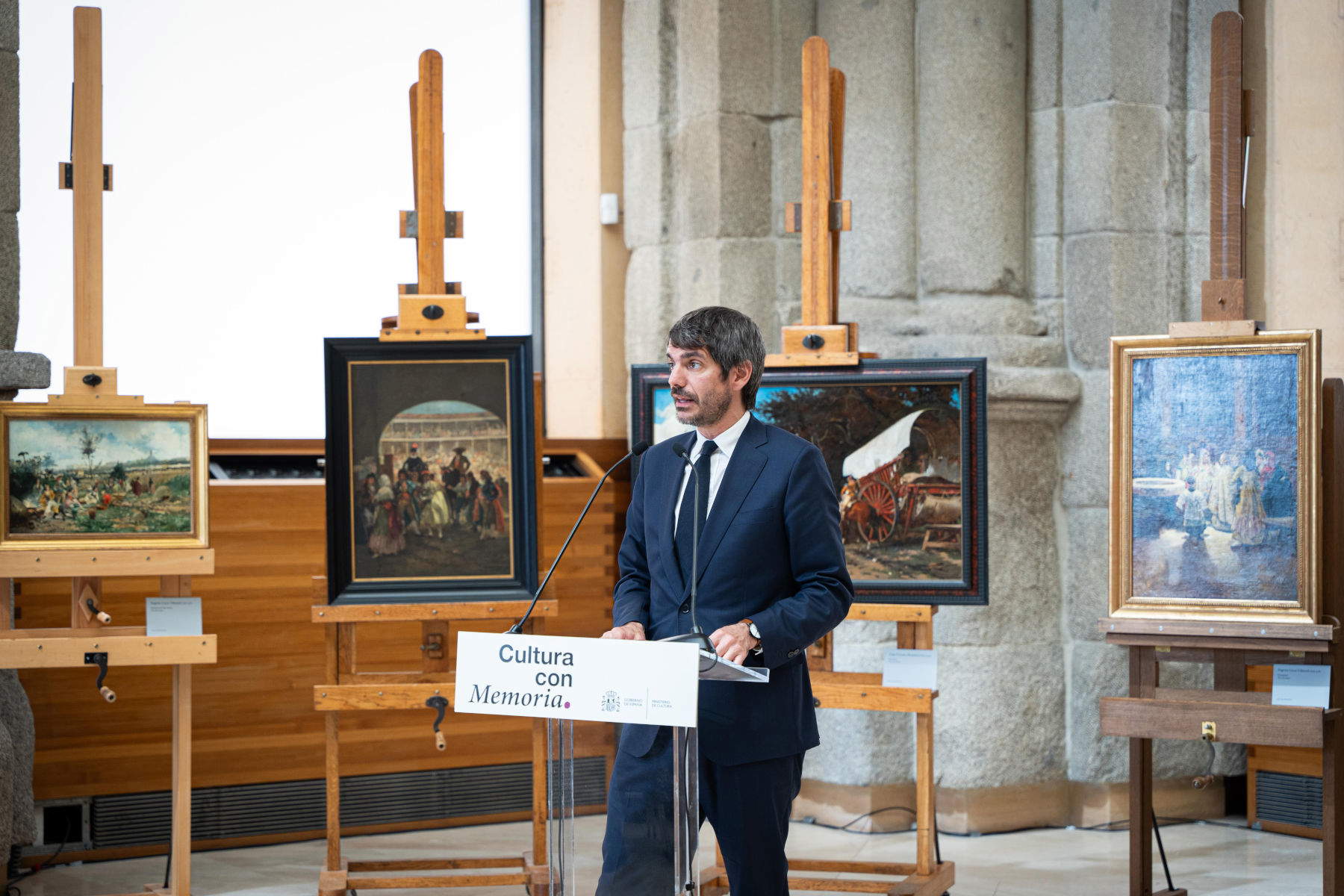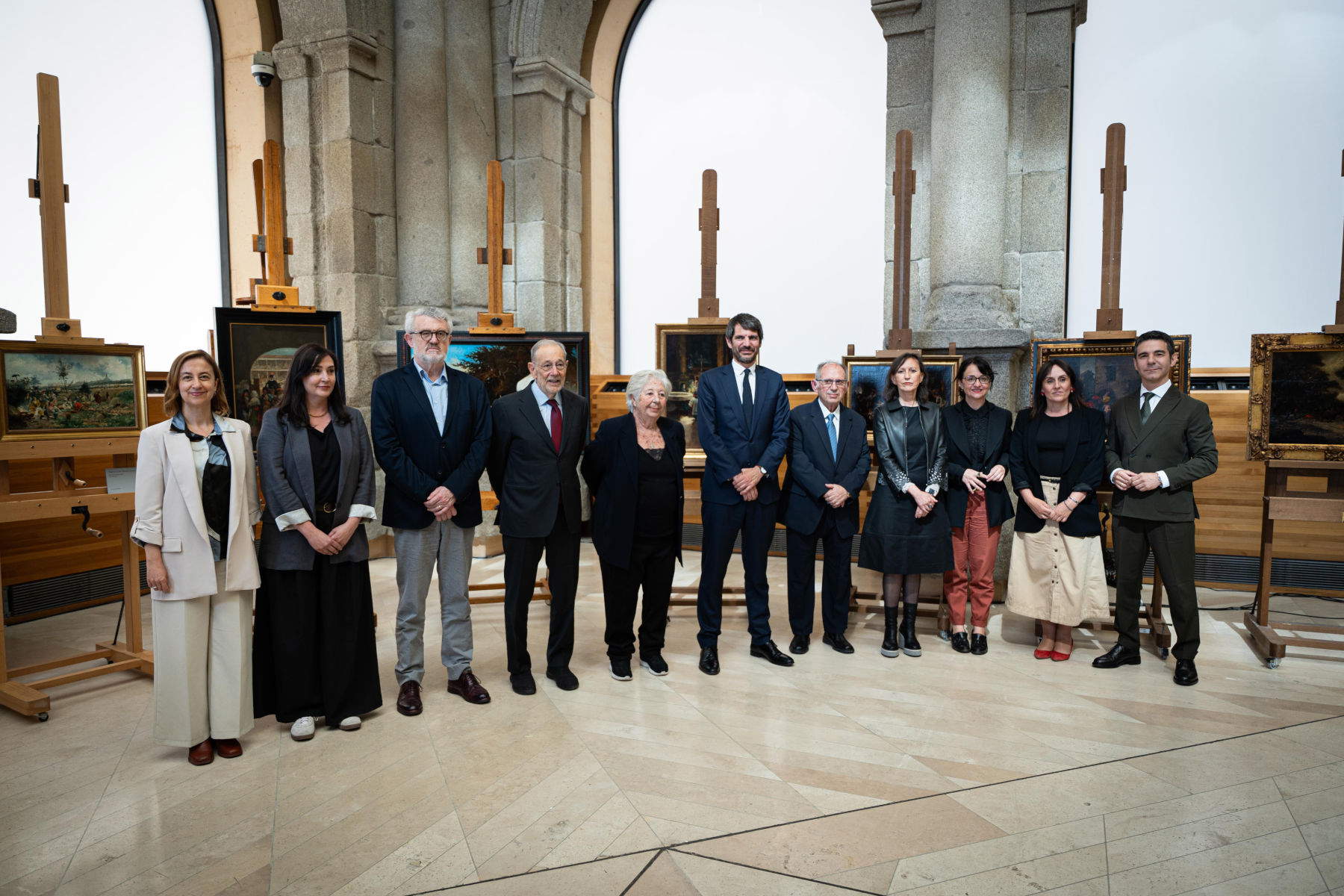In an event charged with symbolic and legal value, theSpanish Ministry of Culture returned to the heirs of Pedro Rico (1888 - 1957), the first Republican mayor of Madrid, a series of artworks seized in 1938 by the Junta de Incautación y Protección del Patrimonio Artístico and never returned during the decades of the Franco dictatorship. The official ceremony was held at the Prado Museum, in the presence of Culture Minister Ernest Urtasun, who led the public act of handover, stressing the importance of the event in terms of memory, justice and institutional transparency. “It is admirable and moving that that period of death and repression, of indoctrination and lack of freedom, could not erase the trace of what we celebrate in this event: culture as an emblem and essential lifeblood of democracy,” the minister said during his speech.
The seven paintings, kept for decades in the storage rooms of several state museums, were finally returned to the Rico family. They are the works La romería (Museo Nacional del Romanticismo), El viático and El bautizo (Museo del Traje), Romería (Museo de Bellas Artes de Valencia), Salida de toreros (Museo de Málaga), Escena de majos y celestina and Asalto a la diligencia (Museo del Prado). They will soon be joined by El merendero and Vendedor de periódicos, currently housed in the Museo de Bellas Artes de Asturias, which are scheduled to be returned in the coming months in a ceremony organized by the autonomous community. The story of the paintings reflects the complexity of the fate of private property during the Spanish Civil War. Pedro Rico’s works were placed under the protection of the republican state to prevent their destruction or looting, but with the fall of the Republic and the rise of Franco’s regime, the former mayor was condemned to exile, deprived of his civil rights and unable to reclaim his property. After his conviction by the Special Tribunal for the Repression of Freemasonry and Communism, the works ended up being dispersed in various state museums, often without identifying labels, making it extremely difficult to trace their original provenance.
Crucial to the restitution was the historical and administrative investigation conducted by the Subdirectorate General of State Museums and the General Directorate of Cultural Heritage and Fine Arts. By cross-referencing data from public archives, museum records and wartime inventories, it was possible to establish with certainty that the works had never been legally acquired by the state, but were in a temporary storage condition, formally not transferred into public ownership. Present during the ceremony at the Prado were, in addition to Minister Urtasun, the director general of Cultural Heritage and Fine Arts, Ángeles Albert, the president of the Patronage of the Prado National Museum, Javier Solana, and representatives of the museums involved, including Carolina Miguel (Museo Nacional del Romanticismo), Helena López de Hierro (Museo del Traje), and Pablo González Tornel (Museo de Bellas Artes de Valencia). Collecting the works, visibly moved, was one of Pedro Rico’s granddaughters, Francisca Rico, accompanied by other family members.


Pedro Rico’s collection was largely composed of 19th-century costume paintings by artists such as Eugenio Lucas and Lucas Villaamil. The focus was on popular subjects, scenes of daily life and religious ceremonies, in line with the collecting taste of the time. Some works were stolen from the Prado’s warehouses in the postwar years: the thieves, in order to hinder their recognition, removed their identifying labels. Some of these paintings were recovered by the police, but the loss of documentation compromised any chance of returning them. Only recent research, the result of meticulous archival work, has made it possible to reconstruct their itinerary.
Pedro Rico’s case is not isolated. According to data released by the Ministry of Culture, there are more than 6,000 assets, including paintings, sculptures, liturgical objects, furniture and textile materials, that were safeguarded by the Junta del Tesoro Artistico during the war, but never returned to their rightful owners. With the public inventory and the cultural policy activated through the Culture with Memory initiative, the Spanish state has initiated a process of restitution and recognition that marks a new phase in the relationship between cultural heritage and democratic memory.
 |
| Spain returns paintings that Franco dictatorship seized from Madrid mayor |
Warning: the translation into English of the original Italian article was created using automatic tools. We undertake to review all articles, but we do not guarantee the total absence of inaccuracies in the translation due to the program. You can find the original by clicking on the ITA button. If you find any mistake,please contact us.